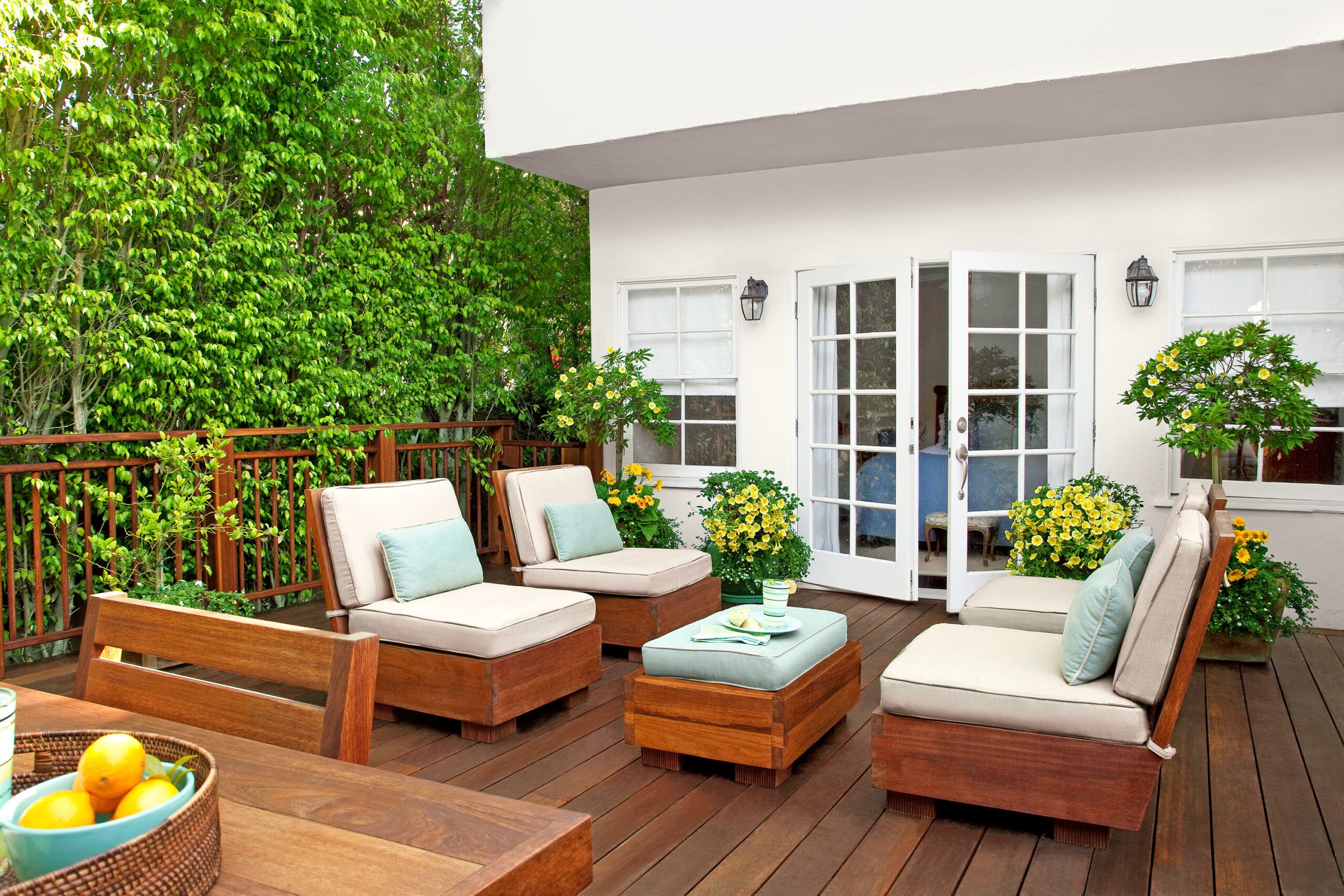Whether you’d like to open a sunny passageway from the living room to the patio or you want to see your garden from the kitchen, French doors can make a lovely addition to a home.
“One of the nicest things in a room is a splash of sunlight on the floor,” says interior designer Mally Skok. “Unlike windows, French doors let light in low, and create a sense of always being able to step outside, which is cheering.” Here’s what you need to know about French doors if you’re considering them for your home.
Similar to shown: 7010 Thermal French doors, from Simpson
Pros and Cons of Exterior French Doors
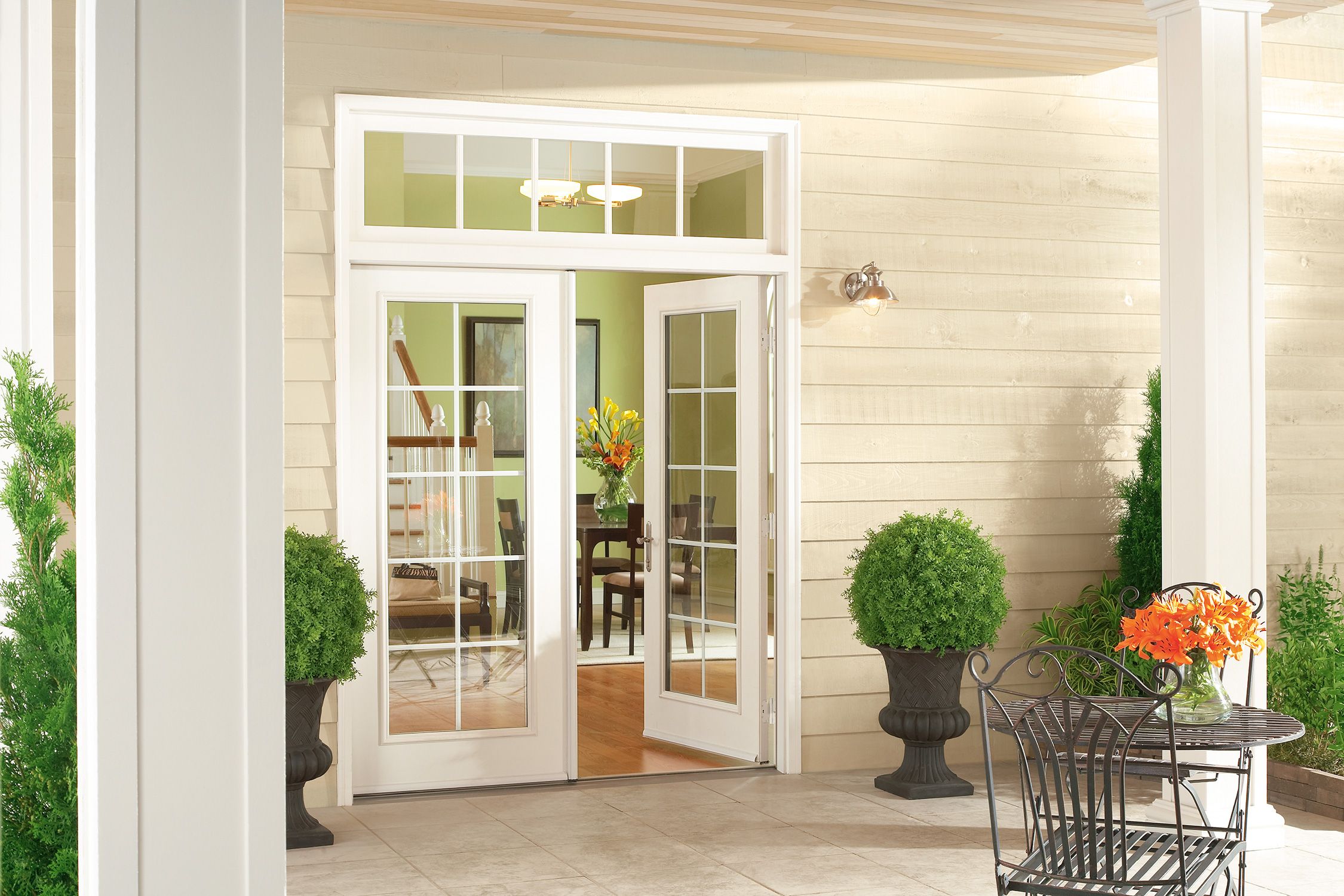
Shown: Lumera 10-light doors, from Simonton
French doors come in a wide variety of styles, from uninterrupted panes of glass to ones crisscrossed with diamond-shaped grids, and they slide as well as swing. New engineering means greater energy efficiency, wind resistance, and security, freeing you to focus on what counts—light and air.
Like any home improvement, French doors carry both pros and cons.
Pros of French Doors
- Natural light: French doors create an unrivaled sense of spaciousness and a connection between the indoors and outdoors. They can brighten indoor rooms even when it rains.
- Ventilation and warmth: French doors boost cross-ventilation in summer and can channel the sun’s warmth through the glass in the winter.
- A traditional look: Sliders with dramatic bottom rails and window grilles have a classic appeal.
- Wide choice of lights: You can reinforce the style of your house and add architectural detail.
Cons of French Doors
- Floor space: French doors can take up space on both sides if swinging doors are paired with swinging screens.
- Subject to the elements: In-swinging French doors in may invite in water. Out-swinging ones are exposed to the weather.
- Maintenance: With sliders, tracks have to be kept free of debris. Weatherstripping will need periodic replacement, and hinges need tightening. All those panes need regular cleaning to preserve the view.
- Lack of privacy: These doors may require shades, blinds, or drapes for privacy, especially at night.
Exterior French Door Parts
Today’s exterior French doors often arrive prehung in a wood frame, complete with sill and weatherstripping, for simple installation. Optional grilles and hardware can be added to round out your door style.
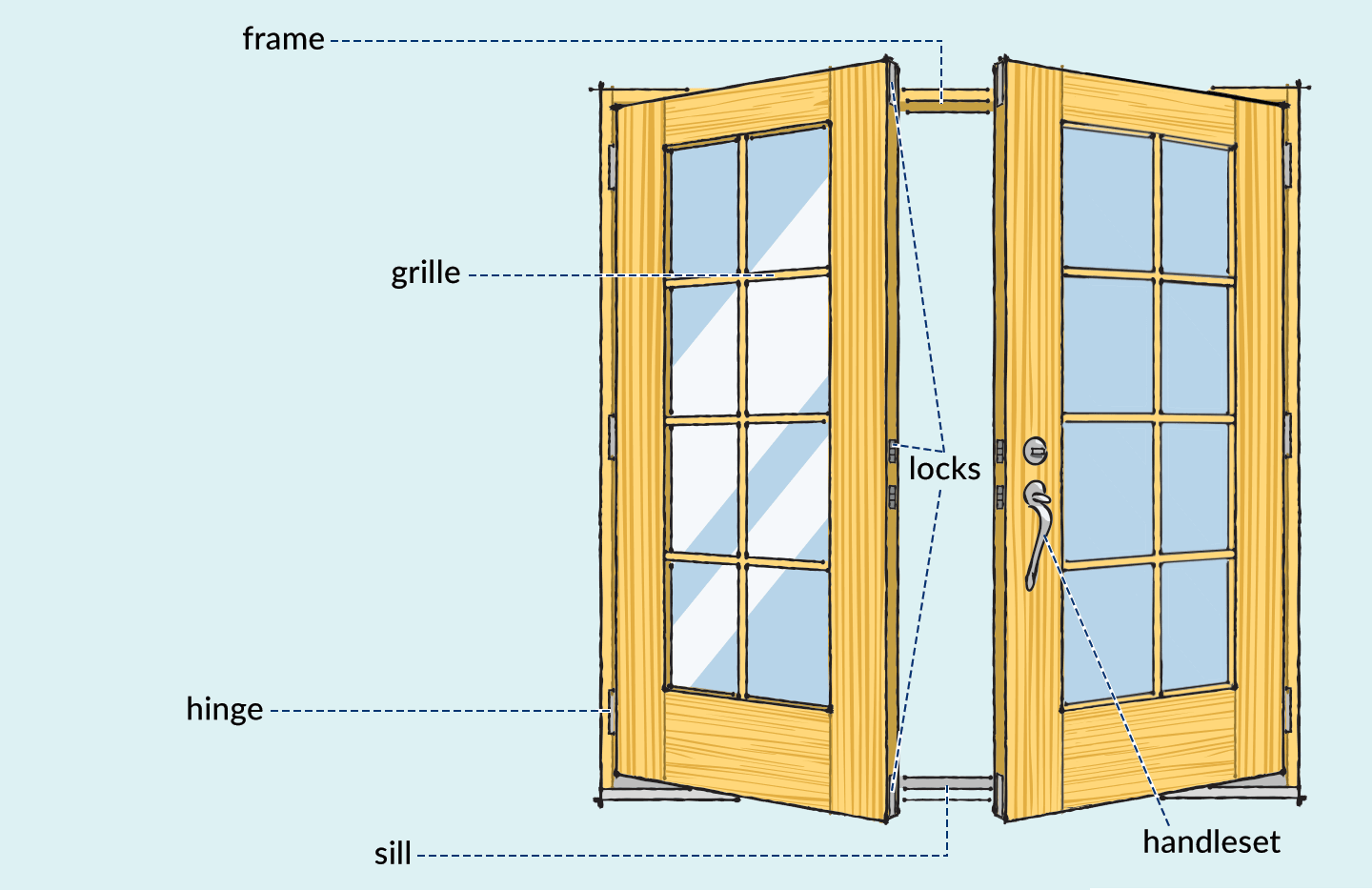
Exterior French Doors: Questions You Should Ask
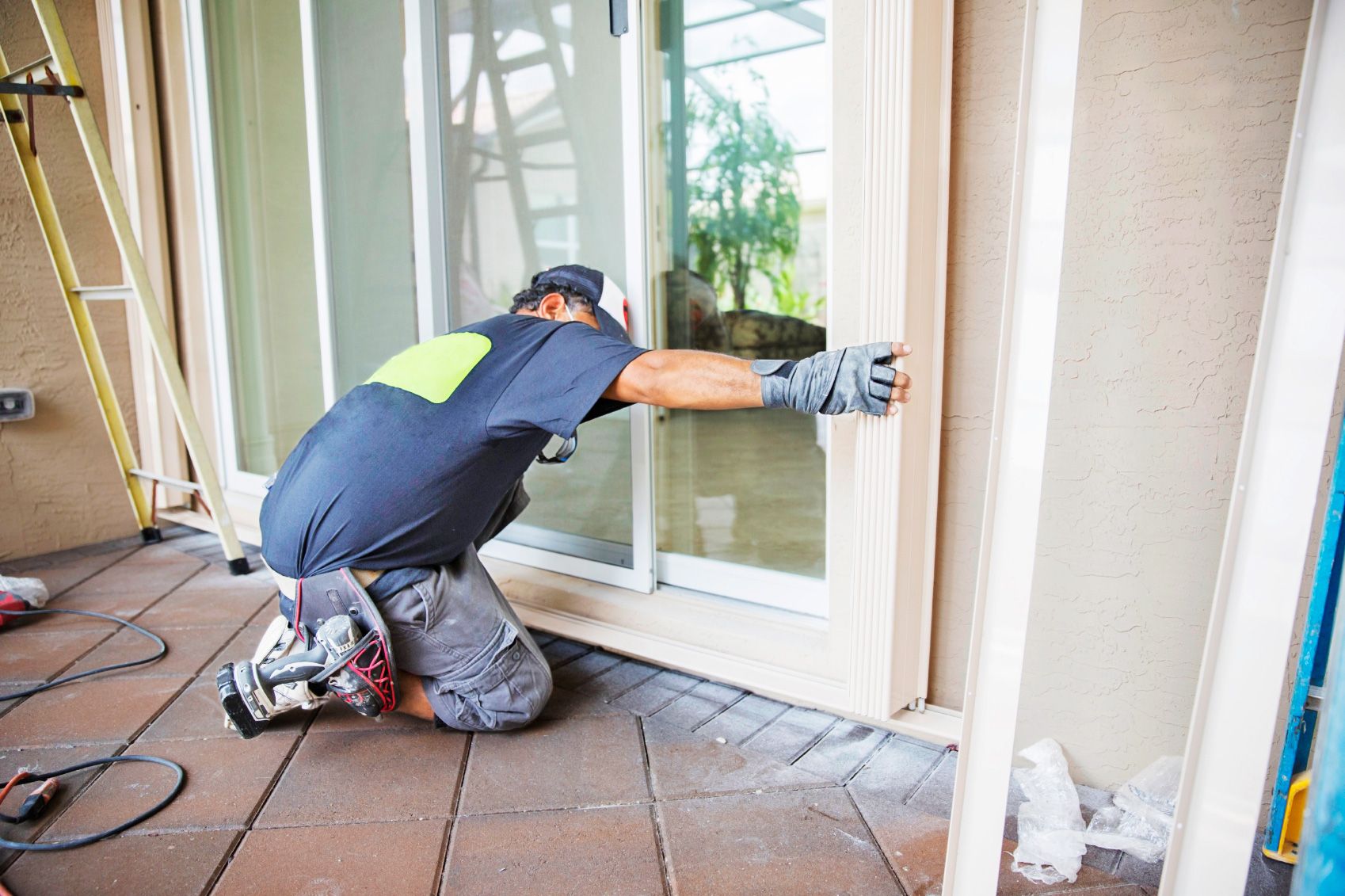
Before you move forward with installing a French door, there are a few questions to consider.
- DIY or hire a pro? While a seasoned DIYer might be comfortable swapping in a new set of prehung doors for old ones, most homeowners will want to call a pro—especially if a new opening is needed.
- How much do they cost? Costs run from $500* for a vinyl or wood door to more than $5,000 for semi-custom in fiberglass or aluminum-clad wood (uninstalled).
- How long will they last? Warranties run anywhere from two years to 20, and some can be transferred to the next homeowner.
- Where to buy? Home centers stock low- to mid-range models. But for the widest selection, visit high-end lumberyards and window and door showrooms.
*Cost data in this article sourced from contractor estimates used by Angi.
Pro advice:
“A rough opening needs to be plumb, level, in the same plane, and about an inch wider and taller than the doors’ frame. Installation always goes more quickly when you focus on prepping the opening right.”
—Tom Silva, general contractor, This Old House
Considerations Before You Buy French Doors
Before deciding to buy a French door or settle on a type, these are some of the important considerations to take into account.
Sight lines: Unless you are simply swapping in new French doors for old ones, work with your designer or general contractor on the best spot for views from inside, comfortable access, and sun and wind exposure.
Clearances: Before opting for hinged doors, make sure they will have room to fully open, whether they swing in or out. Space-saving options include one hinged door and one that’s fixed, or doors that slide.
Type of glass: A transom or sidelights can augment the impact. Textured or frosted panes add privacy. In a hurricane zone, look for a design pressure rating that complies with local building code.
Screen options: Hinged screens need floor space, and sliders mean another track—a semitransparent material like fiberglass screen cloth is less obtrusive. The best solution may be a retractable screen, sometimes sold with the door, that rolls up into the jamb, out of sight until needed.
Exterior French Door Materials
Vinyl
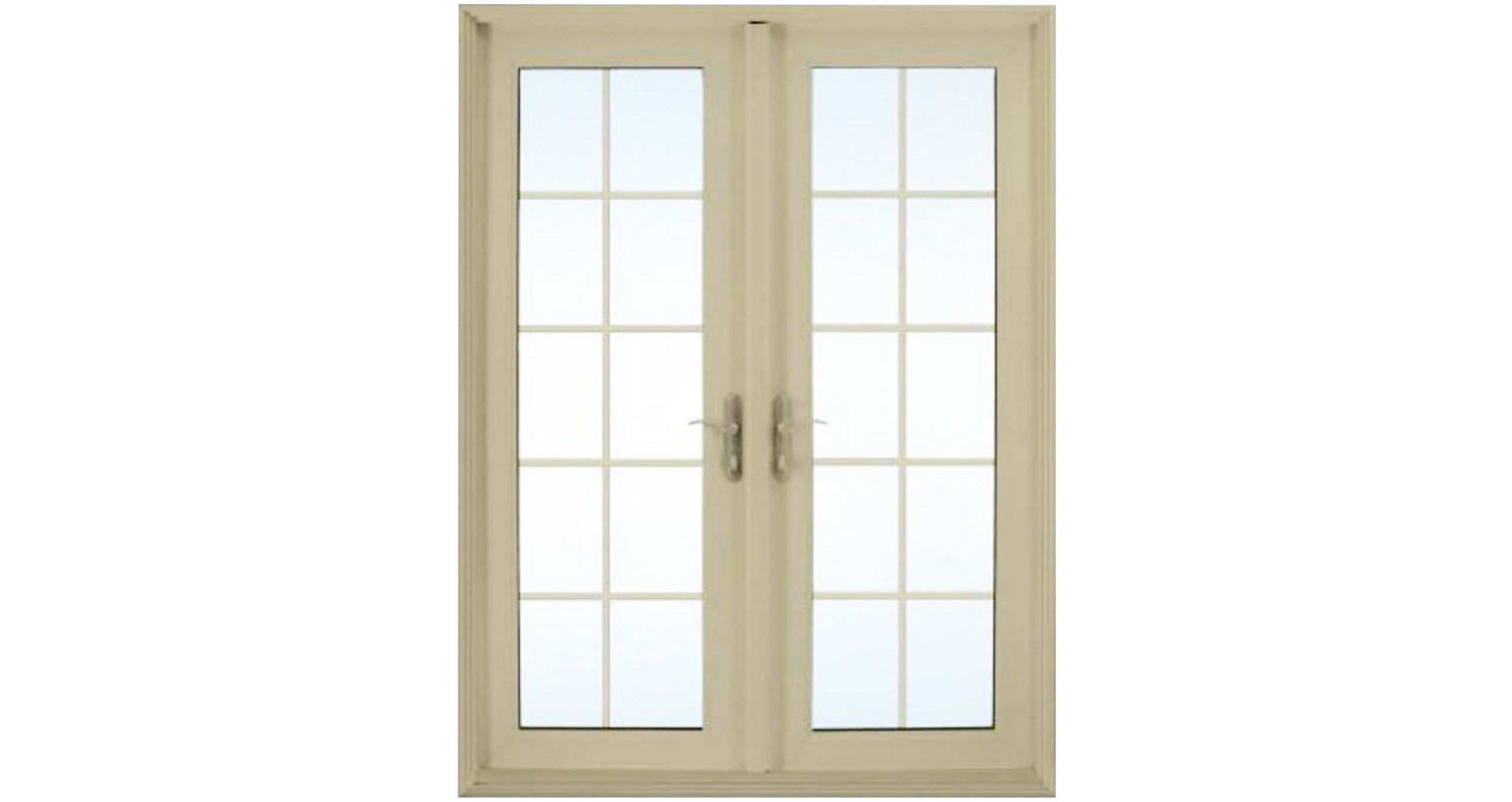
Cost: $-$$
Quality vinyl is affordable and durable, and mimics the look of painted wood—and you can choose a different color for each side. A stiff foam core adds energy efficiency.
Shown: Premium Atlantic Vinyl doors, prehung pair from $2,700, Jeld-Wen
Fiberglass
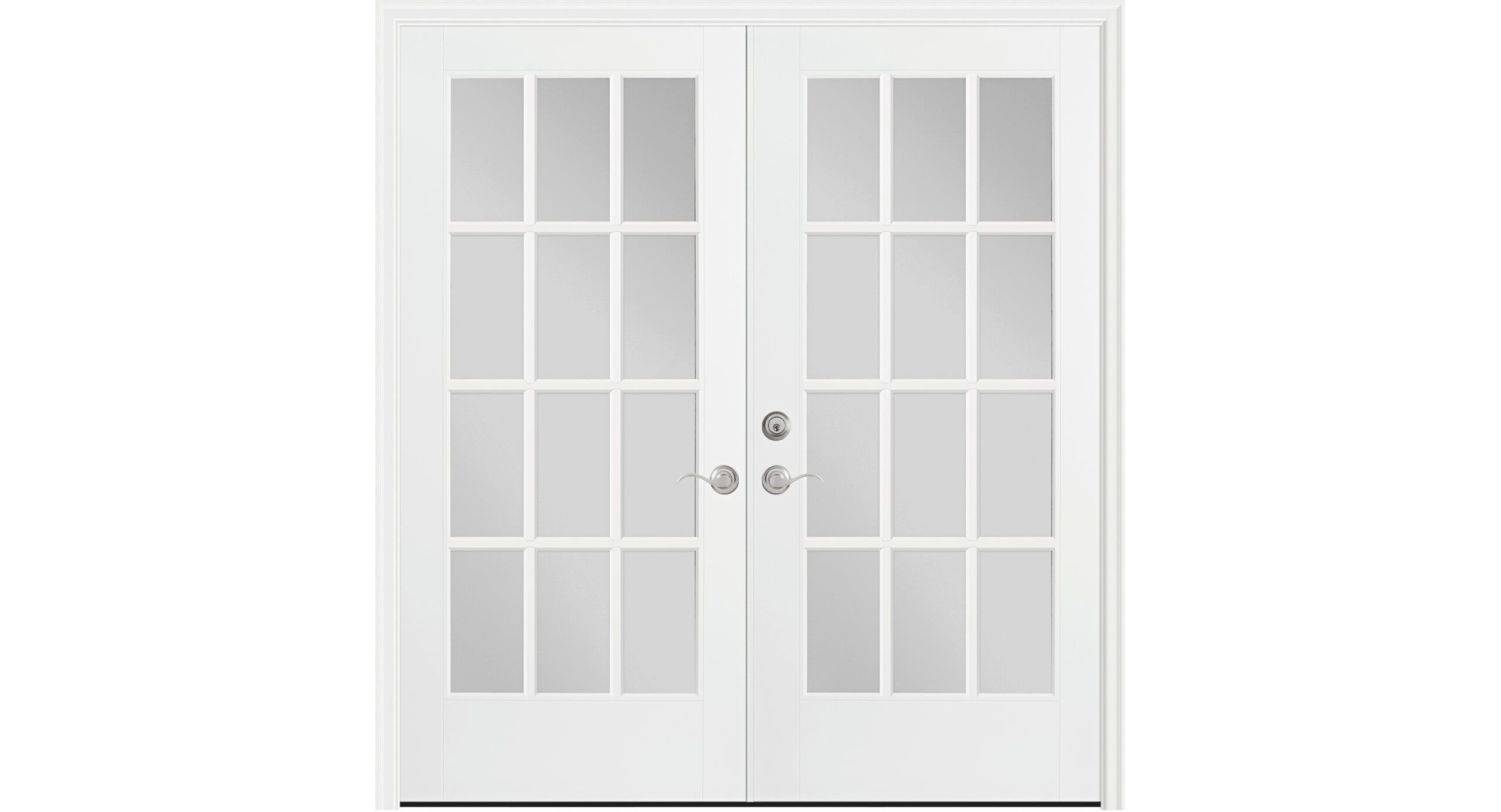
Cost: $$-$$$
Stable, energy-efficient, and low-maintenance, sturdy fiberglass offers superior resistance to UV rays, rain, and cold weather, and it can be painted or finished with marine varnish. Foam cores provide insulation. These come in a smooth finish or with a realistic embossed wood-grain look that can be stained.
Shown: VistaGrande doors, prehung pair from $3,500, Masonite
Clad Wood
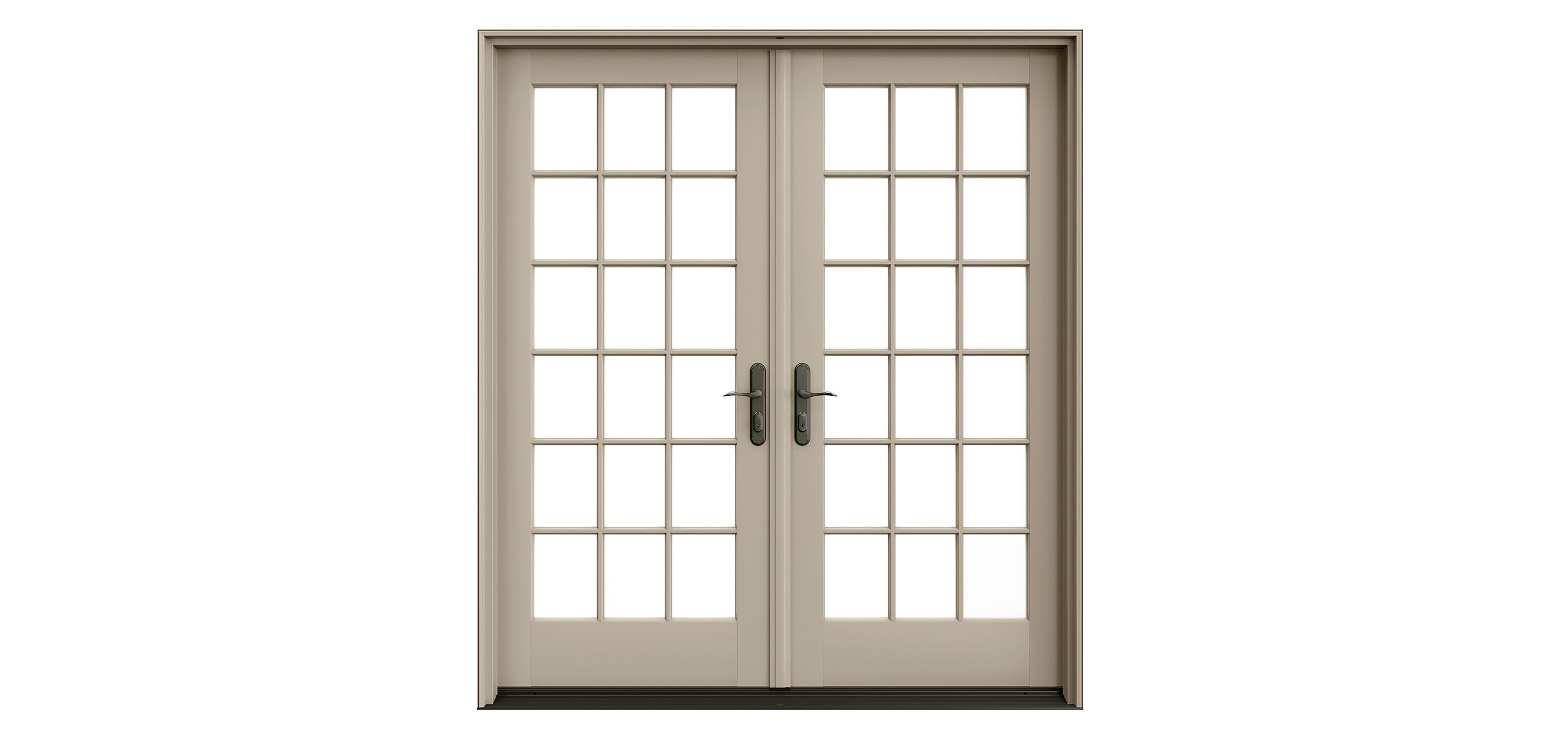
Cost: $$-$$$$
Wood on the interior has a warm, traditional look, while aluminum, vinyl, or fiberglass cladding on the outside adds durability and stands up to the elements better. The core is typically engineered lumber for added strength. Paint or another finish can keep the laminated veneer inside looking new.
Shown: Proline 450 Series Patio doors, prehung pair from $2,600, Pella
French Door Types
Single In-Swinging
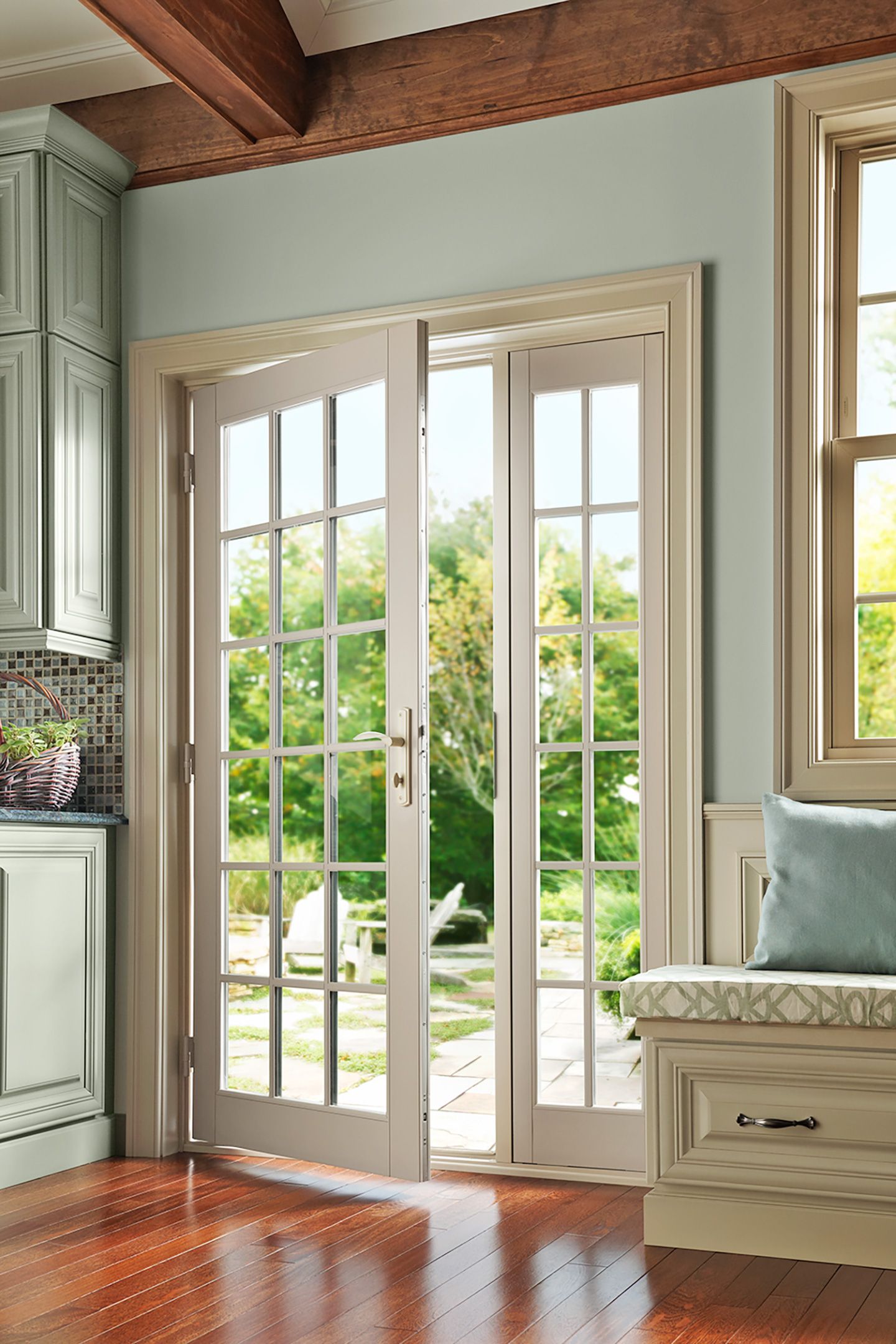
A one-hinged panel is considered a French door when a fixed sidelight suggests the look of a pair. An overhang helps keep rain out when the door opens inward.
Shown: Tuscany Series door and fixed panel, in vinyl, from about $2,000, Milgard
Double In-Swinging
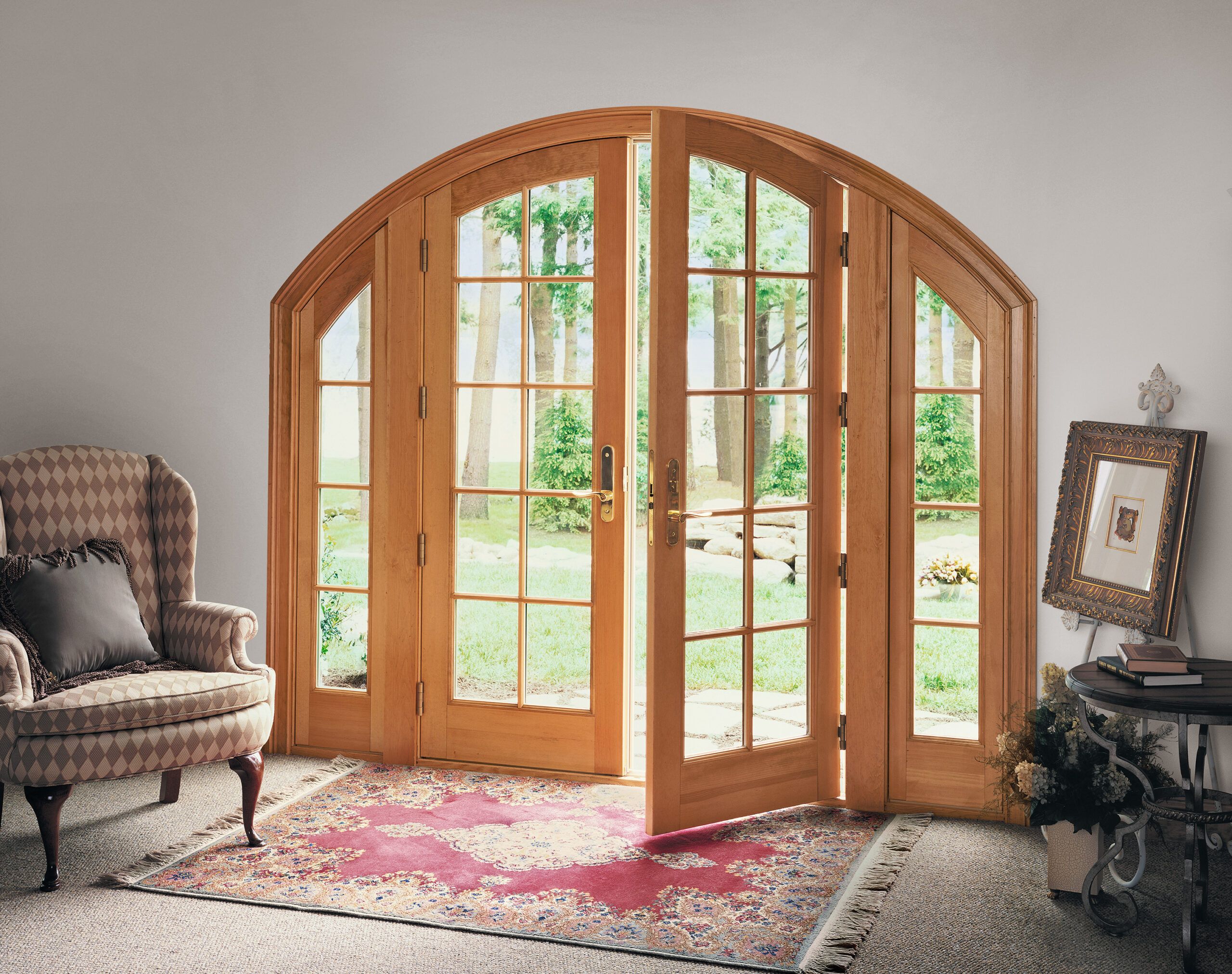
Two doors that open in have a gracious look. An arched shape can add interest.
Shown: Ultimate Swinging Arch Top French doors, in aluminum-clad wood, prehung pair from $6,000, Marvin
Doubles That Swing Out
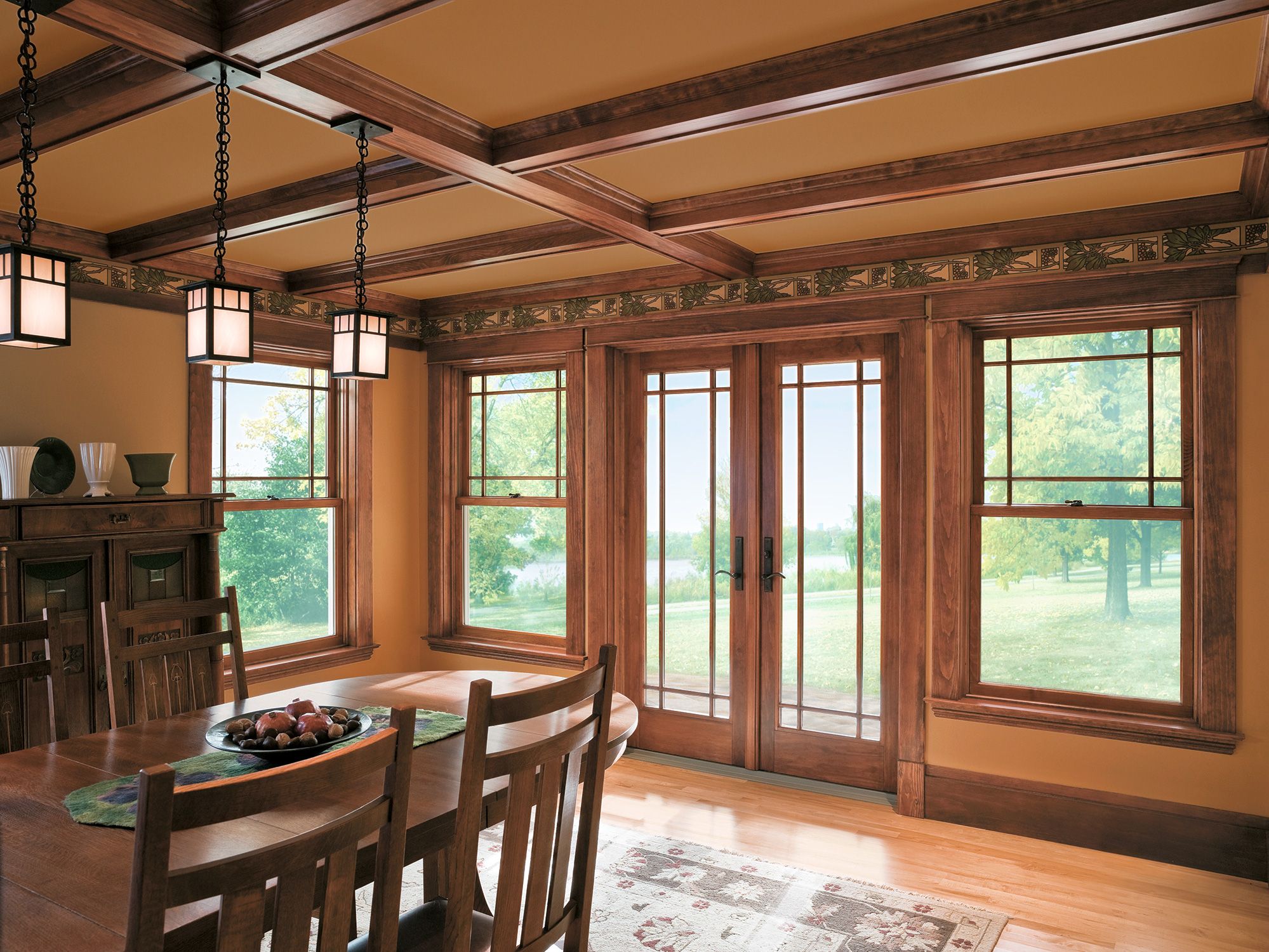
Out-swingers just get tighter as the wind blows, compressing the seal. Coordinating windows add visual impact.
Shown: A Series Hinged Patio doors, in wood, fiberglass, and composite, prehung pair from $2,860, Andersen
Center-Hinged In-Swinging
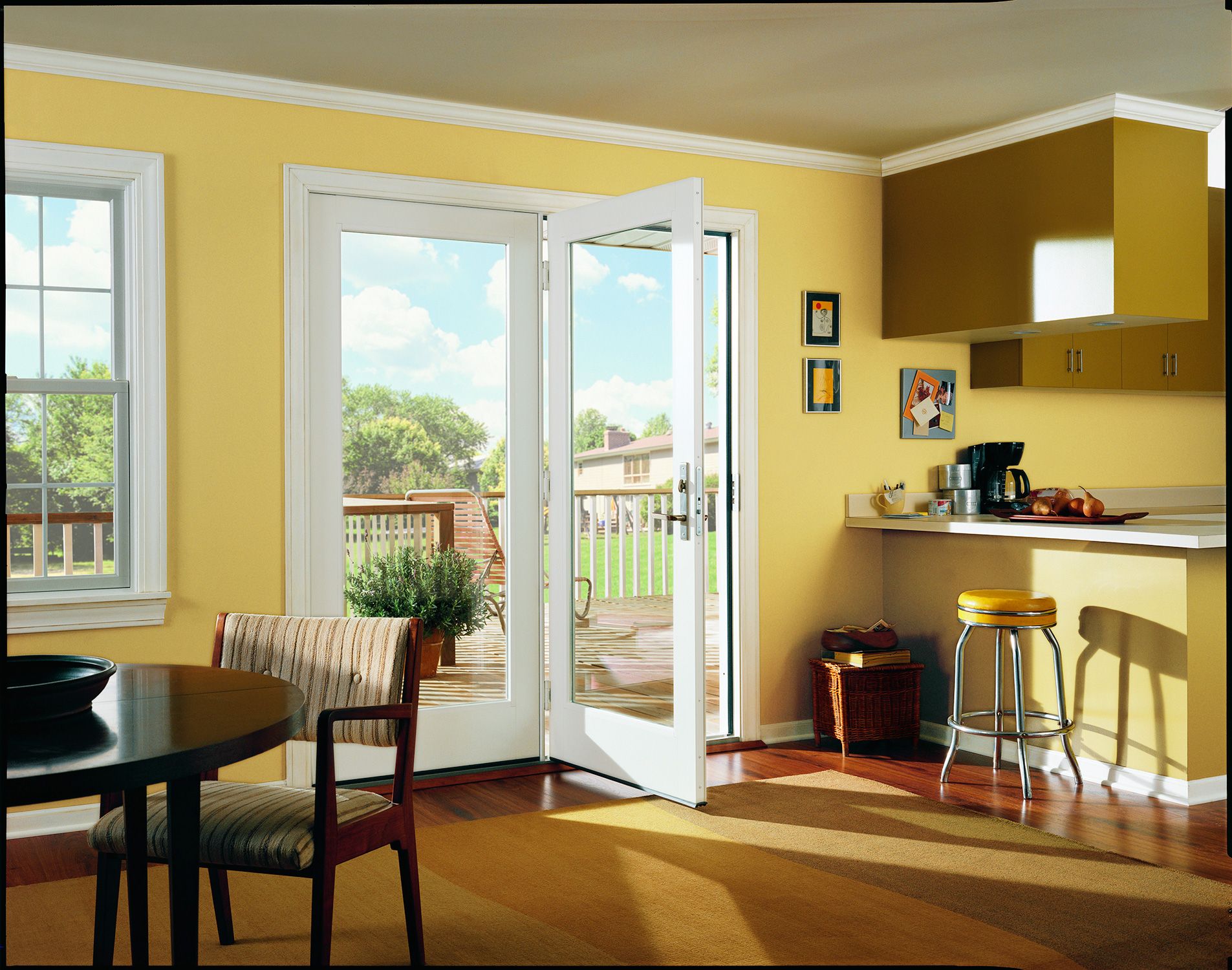
One door and one fixed pane suggest a pair. Place the hinged side where the swing is most convenient. Taller bottom rails give single panes French-door appeal.
Shown: 200 Series Hinged Patio doors, in vinyl-clad wood, prehung pair from $2,470, Andersen
Single Slider
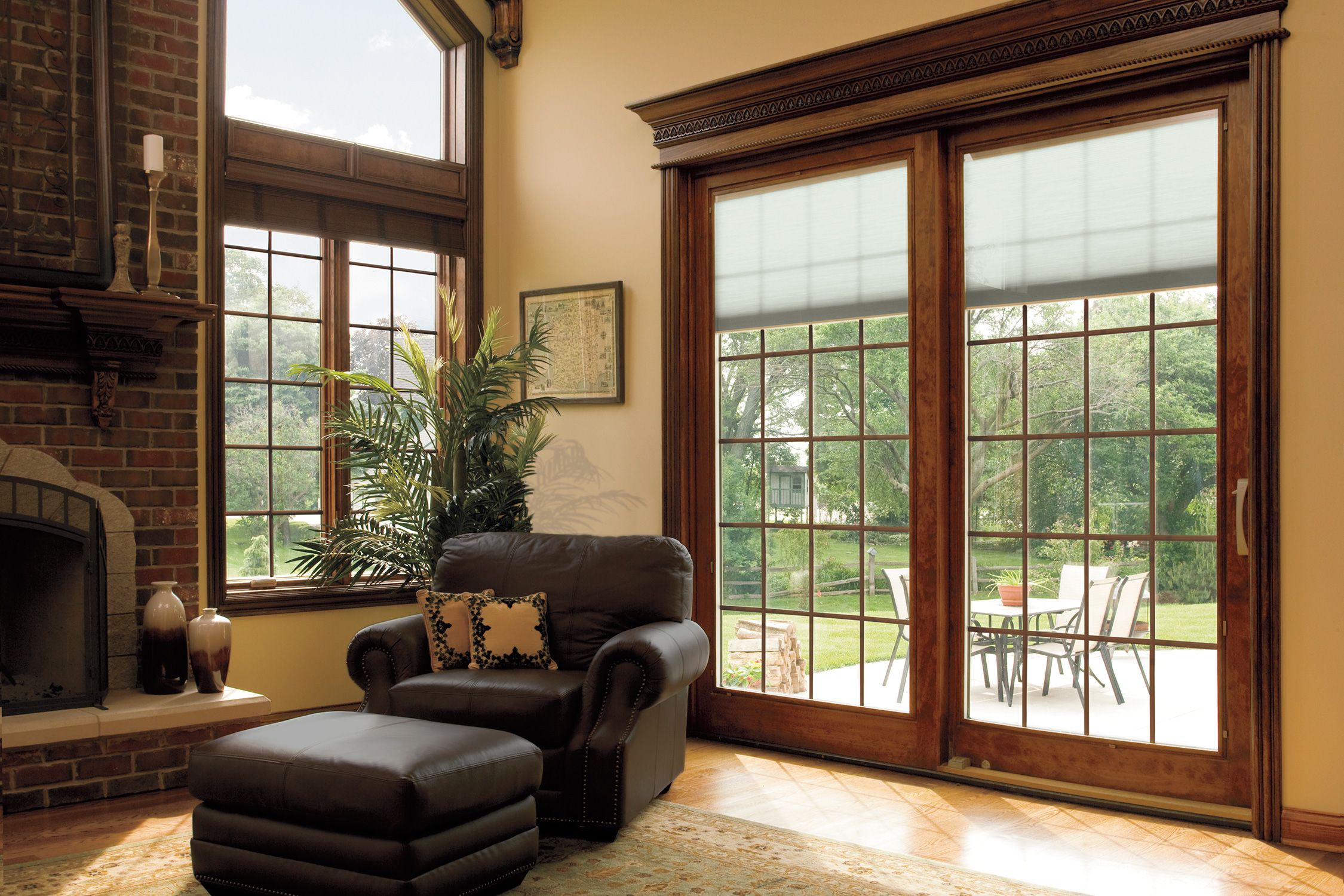
A slider saves space indoors and out. Remote-control blinds fitted between panes provide light control with a clean look.
Shown: Designer Series Sliding Patio doors with motorized shades, in aluminum-clad wood, prehung pair from $4,425, Pella
Telescoping Slider
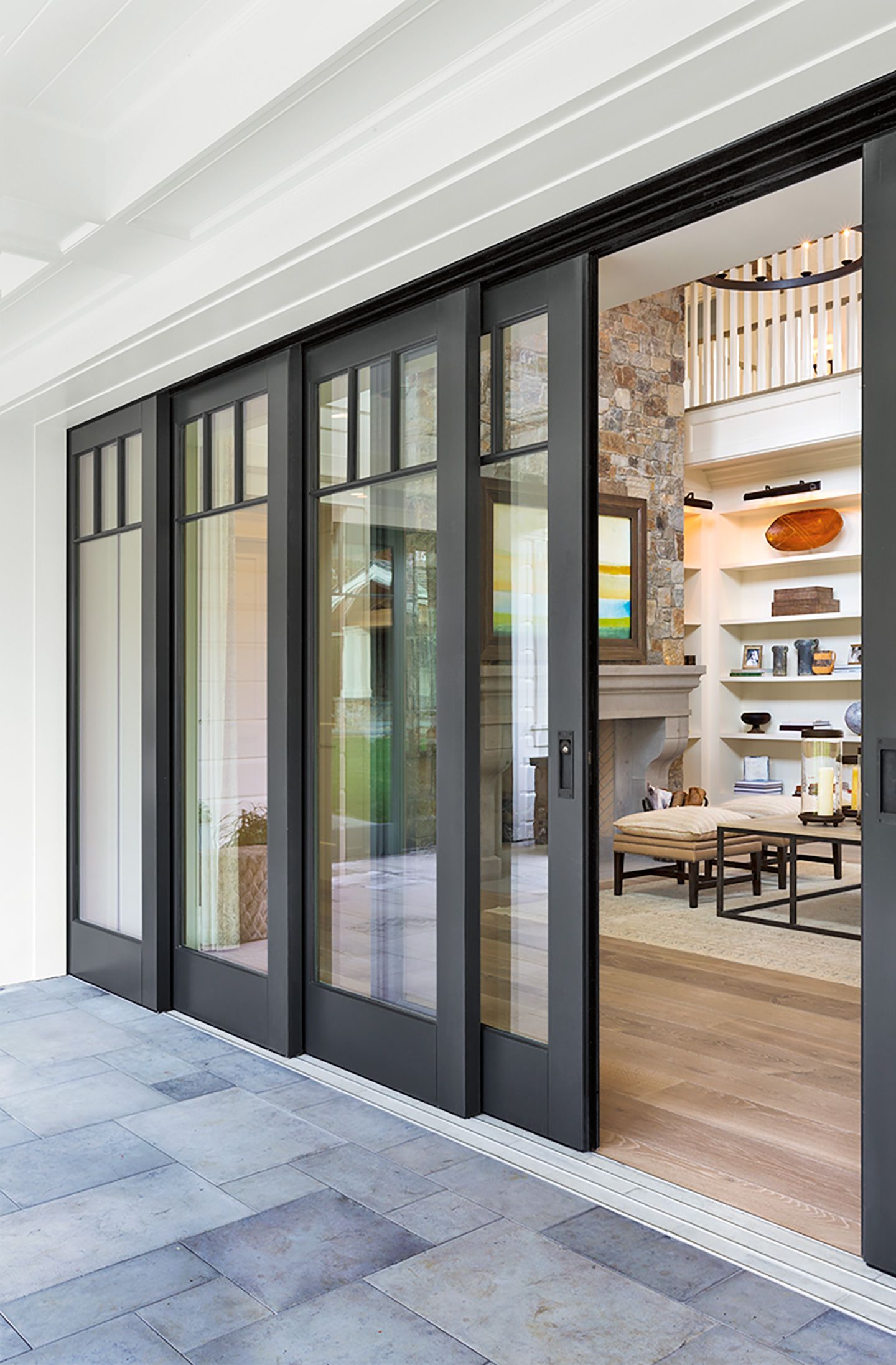
Up to 10 panels travel on smooth-gliding ball-bearing rollers.
Shown: Architect Series Multi-Slide and Lift-and-Slide Patio doors, in aluminum-clad wood, this configuration from $14,560, Pella
French Door Light Styles
Colonial
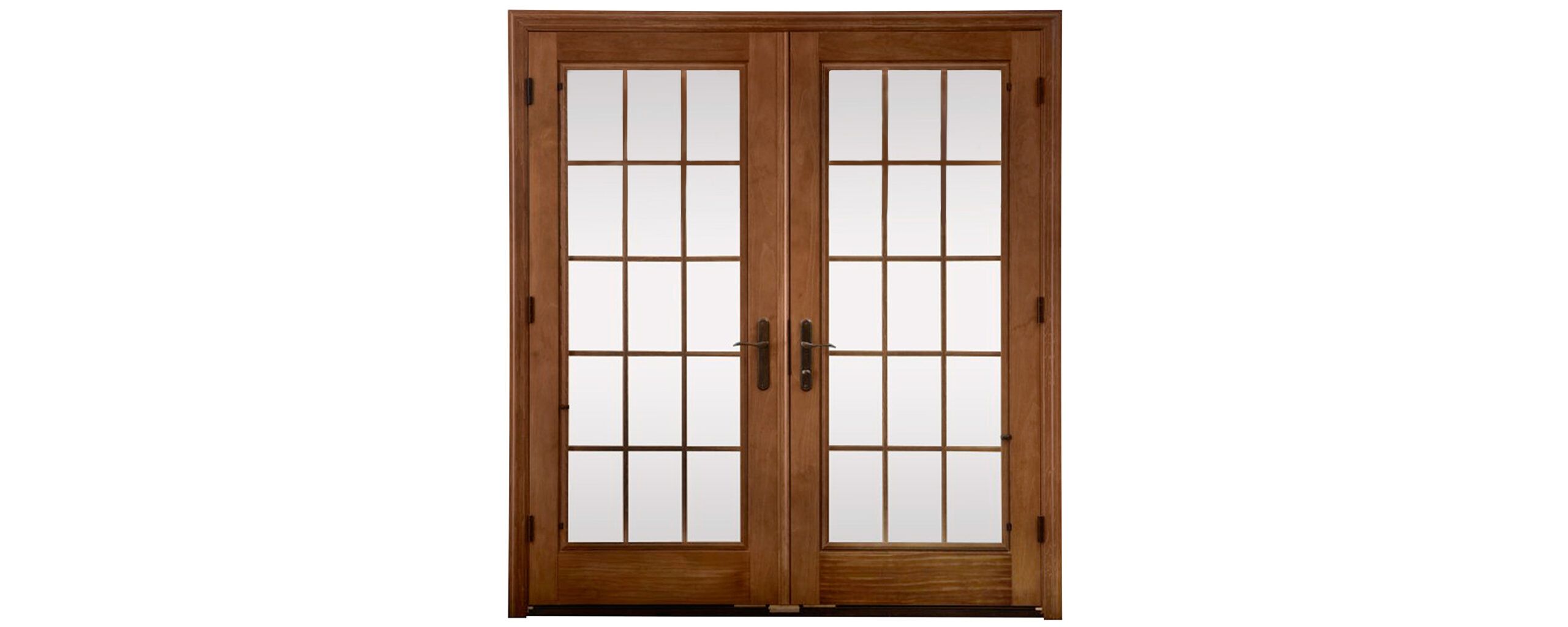
Doors with 15 divided lights signal traditional style.
Shown: Architect Series, prehung pair from $3,700;, Pella
Victorian
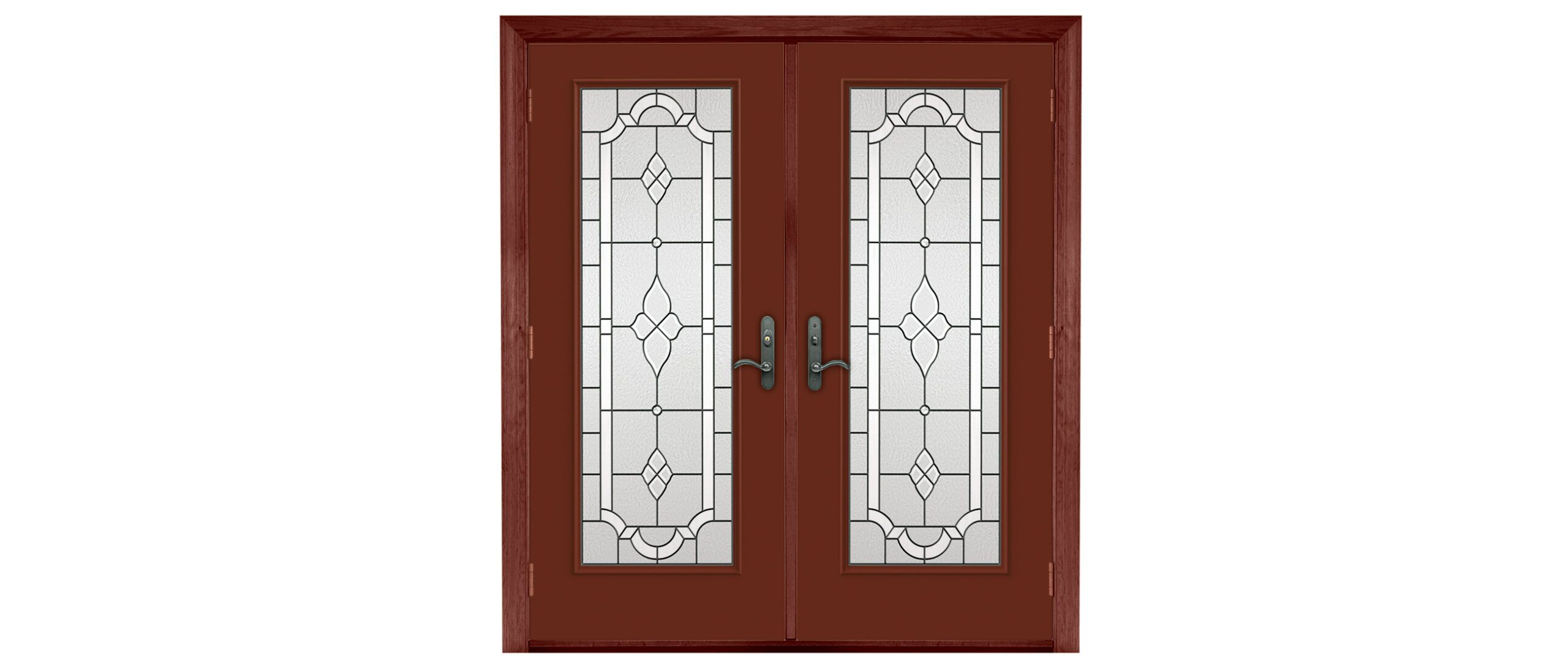
Leaded glass with a stylized floral design that would suit Queen Anne.
Shown: Design Pro Tripoli doors, prehung pair from $3,981, Jeld-Wen
Craftsman
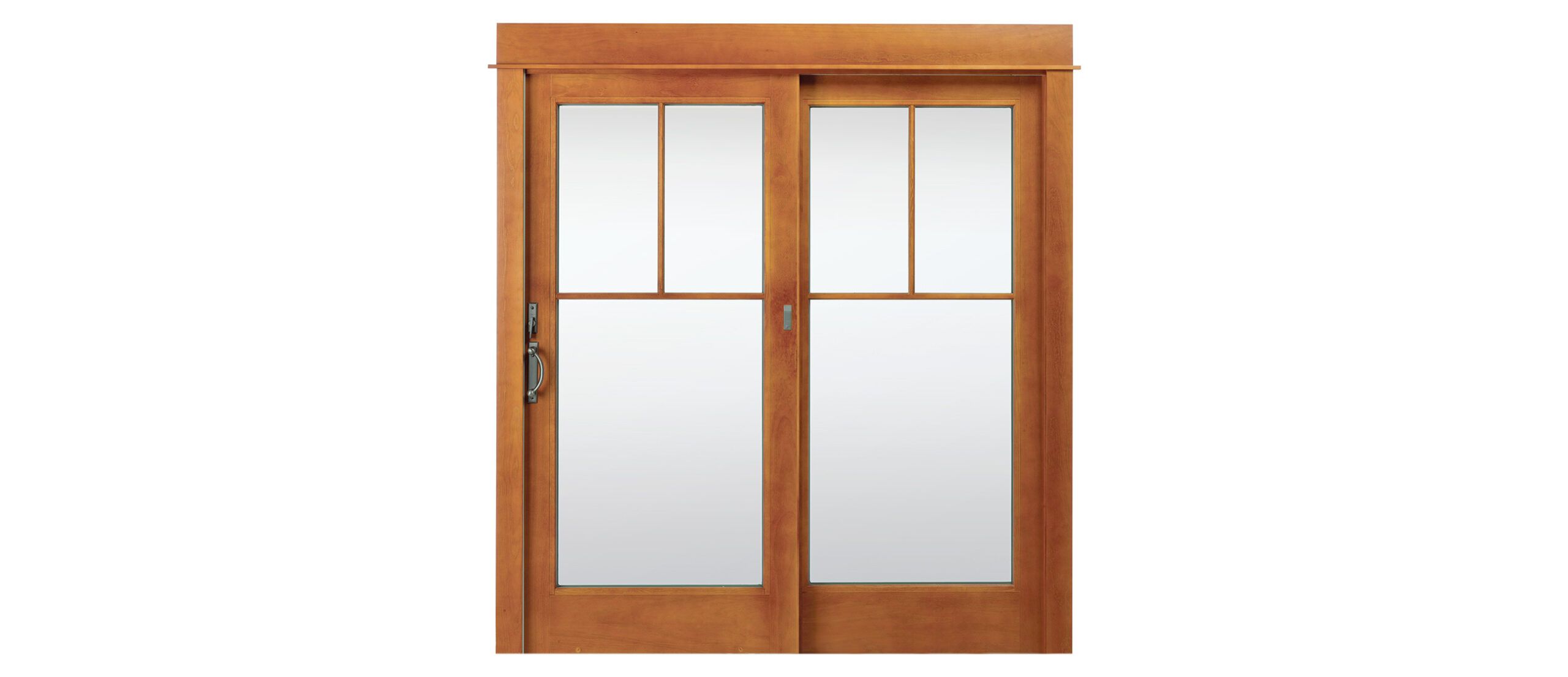
Two-over-one lights evoke period bungalows.
Shown: 400 Series Frenchwood pine doors, prehung pair from $2,175, Andersen
Tudor Revival
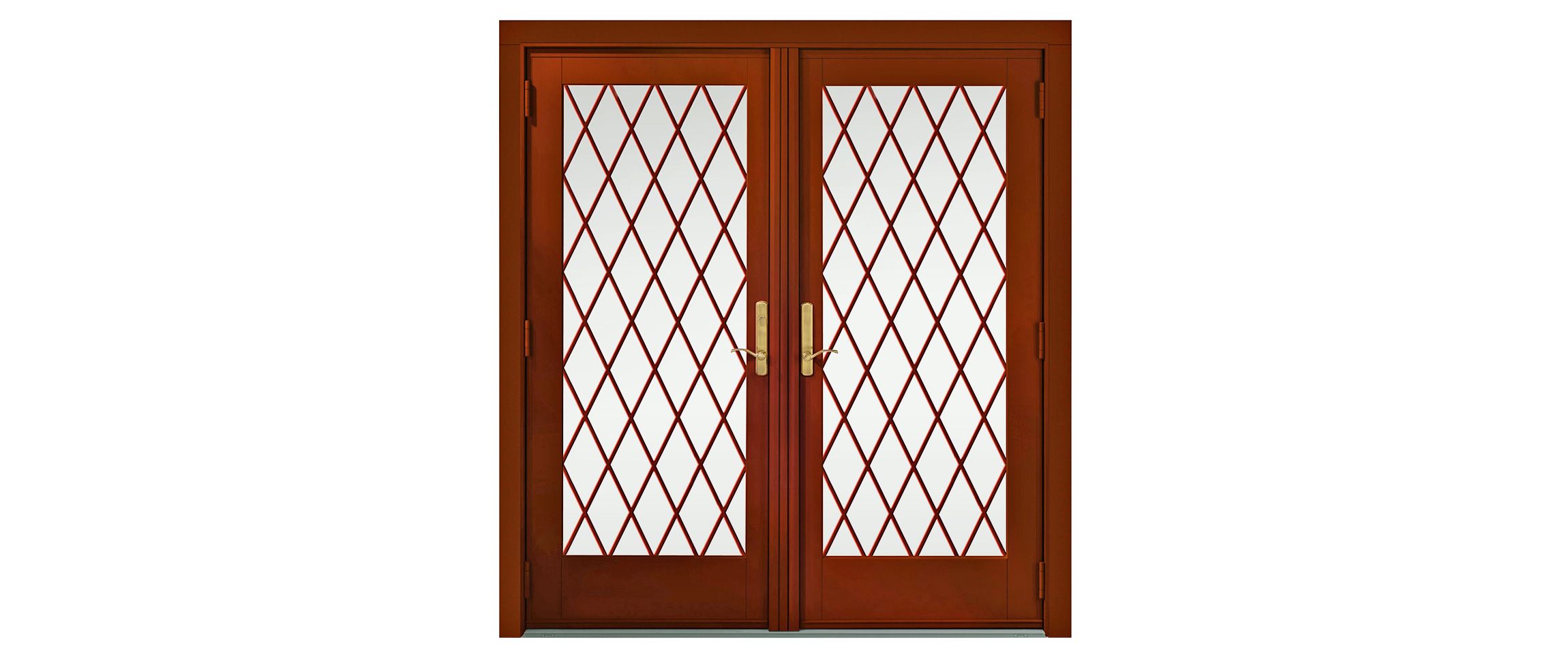
Diamond grids and a dark stain have that manor-house look.
Shown: A Series Diamond fiberglass/composite doors, prehung pair from $2,160, Andersen
Contemporary

Sleek flat bars suit a minimalist aesthetic.
Shown: 400 Series Frenchwood pine doors, prehung pair from $2,420, Andersen
Prairie
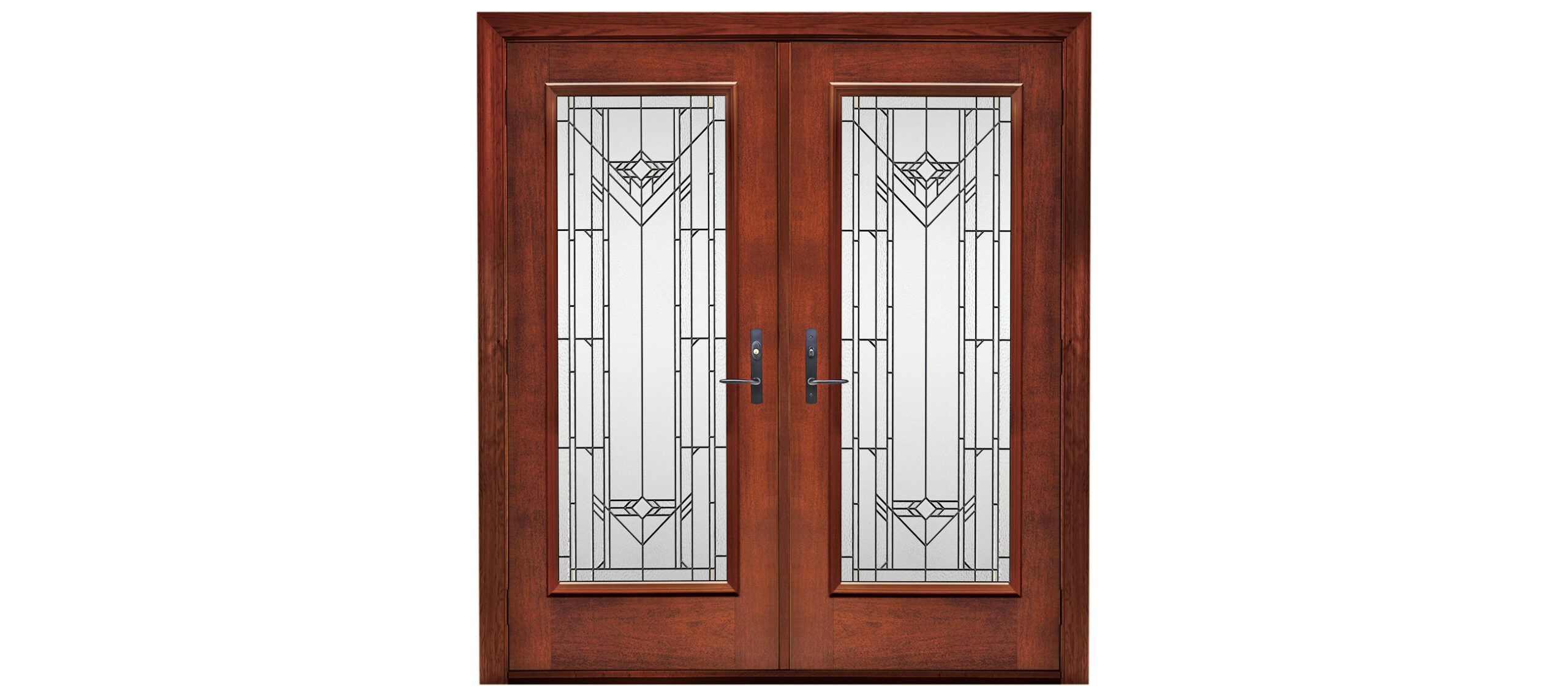
Faux leading in a clean, geometric pattern inspired by a Frank Lloyd Wright design.
Shown: Architectural Fiberglass Glass Panel doors, prehung pair from $7,150, Jeld-Wen
Styles of French Door Lights

Manufacturers offer different ways to get the look of individual panes while cutting energy loss.
- True divided lights: Separate small panes hark to a time when glass couldn’t be made in sheets—or insulated. These can be hard to clean.
- Bars or grille on one side: Flat or beveled grids offer the illusion of divided lights—outside for curb appeal, inside to frame views. These can be fixed or removable for cleaning.
- Bars or grilles on two sides: If there are double panes, spacers between them can make the illusion more convincing.
- Sandwiched grille: A grid between two panes looks least authentic from any angle, but is easiest to clean.
Energy Efficient French Doors

Window glass no longer transfers heat the way it used to. Choices now include doubled or tripled tempered panes—which can block some light—with air or a gas-like krypton providing insulation. “Low-e” coatings can also help prevent heat transfer.
An Energy Star label means the door has been tested and certified to meet strict standards, with the lower the U-factor, the better. Energy Star-certified sliders installed before December 31, 2016 qualify for a federal tax credit—find details at energystar.zendesk.com. But equally important is proper installation and maintenance. To conserve energy and cut down on drafts, the doors need to close tight and have weatherstripping that’s in good shape.
French Door Locks

Multipoint lock sets offer more security and fewer drafts. For both hinged and sliding doors, the best protection from break-ins and strong winds is a multipoint locking system, with dead bolts at the top, middle, and bottom.
Since they require a key, these bolts prevent intruders from breaking a pane and reaching in to open the door. For the extra-security-conscious, hinged doors can be made with five locking points, with two more bolts in the casing and threshold. Secure locks not only buy peace of mind but lower energy bills, thanks to the sturdier air seal.
Exterior French Door Hardware
Levers
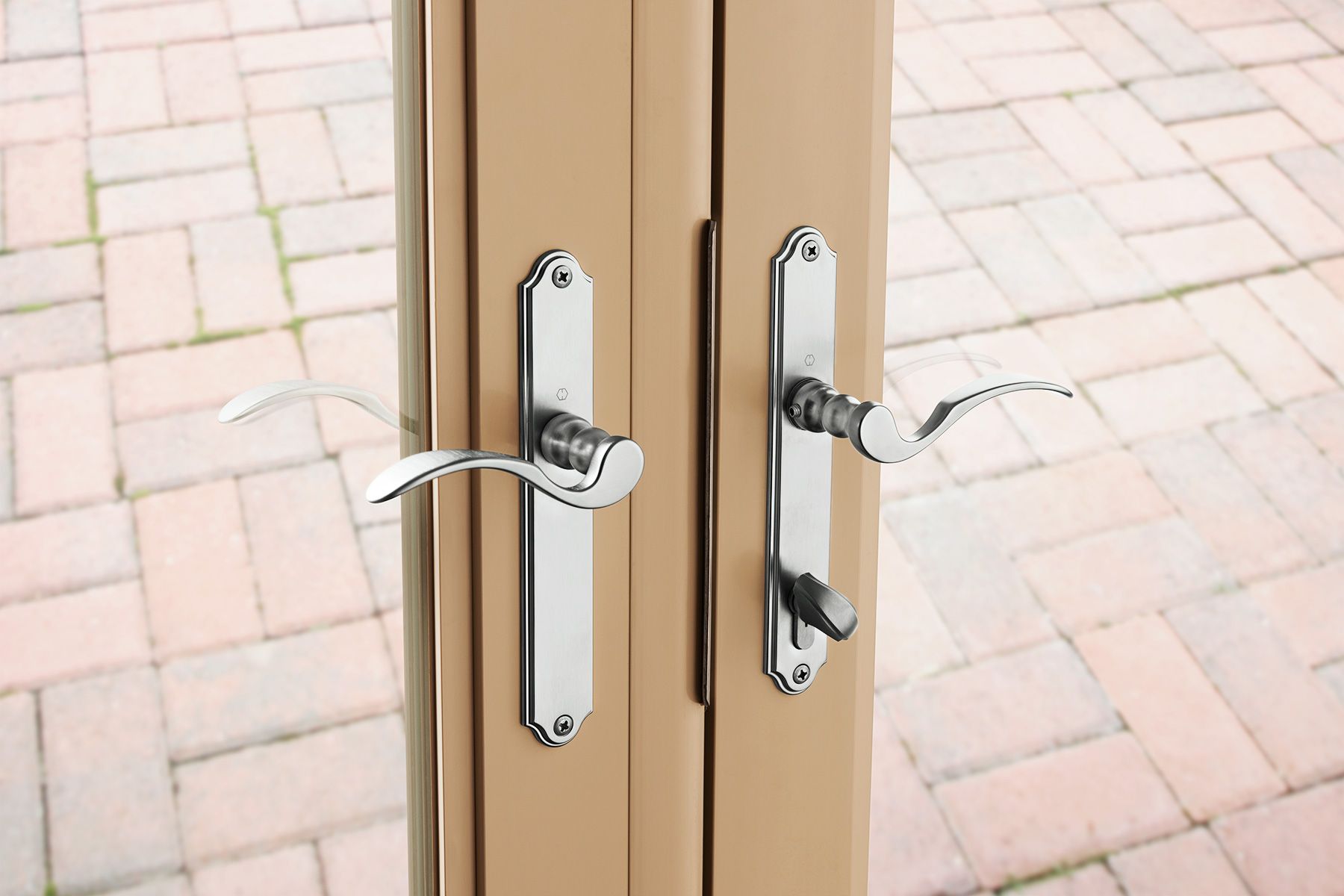
This classic choice is a natural for its ergonomic shape and traditional good looks, especially with an escutcheon plate. Knobs are an option, too.
Shown: Garden Door Hardware, $170, Simonton
Pulls
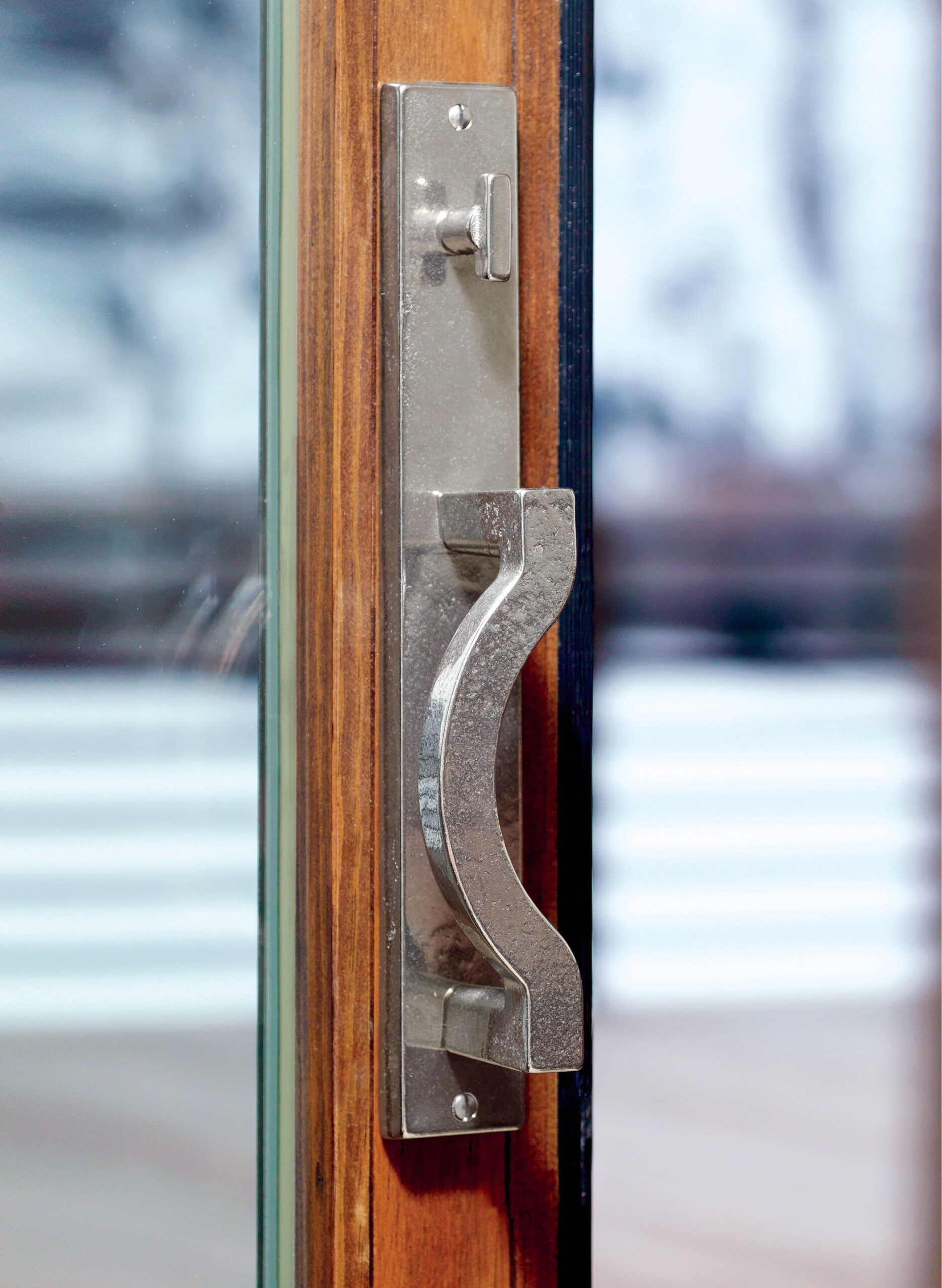
Fixed hand-holds help to ease sliders open. These can stand out and be decorative or be recessed into the door.
Shown: Metro Entry Sliding Door Set, $719, Rocky Mountain Hardware
Cremone Bolts
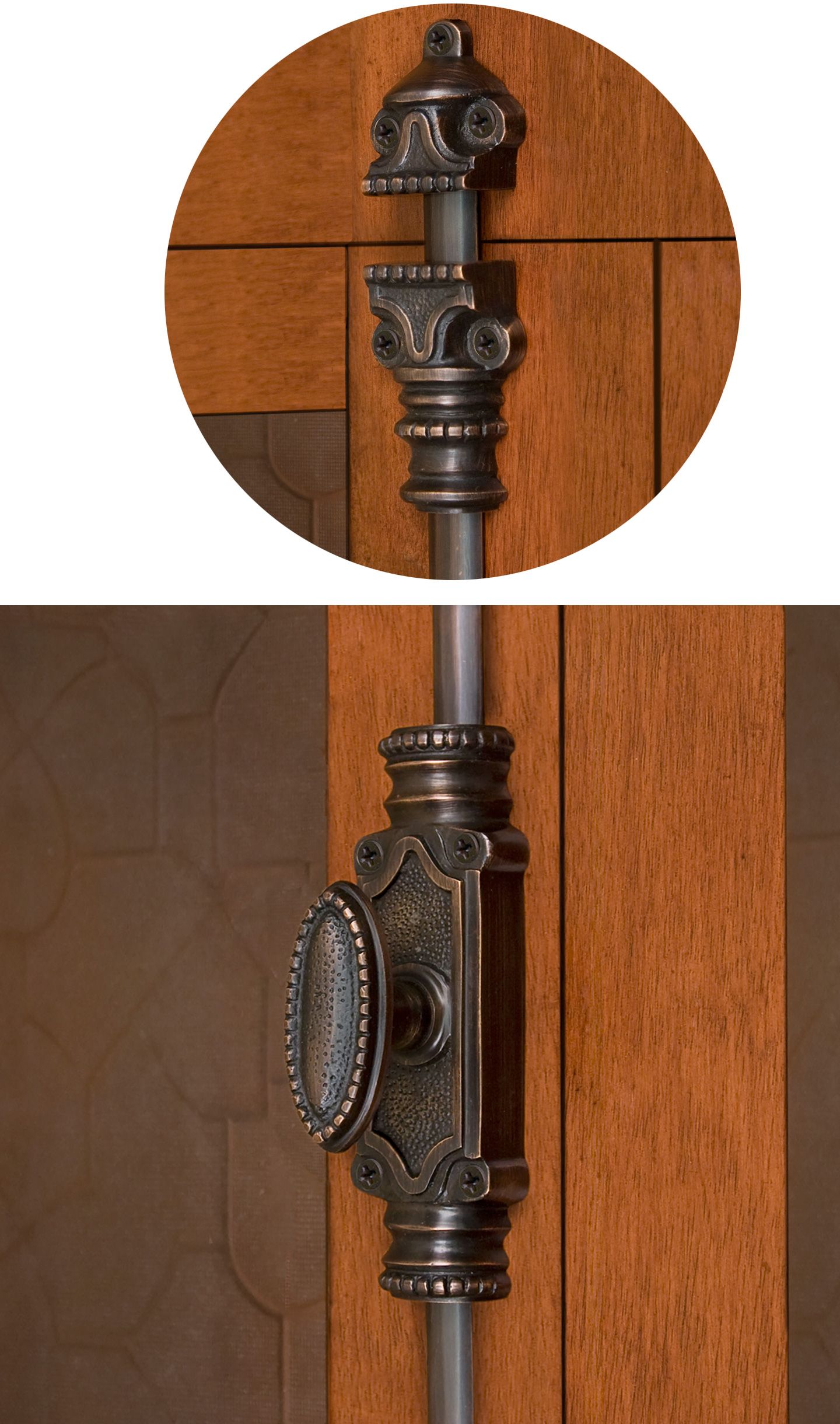
Evoking period French doors, these have face-mounted bars that run top to bottom and slot into sockets in the casing and threshold. They retract with a turn of the knob to open.
Shown: Brass Beaded Cremone Bolt, from $162, Signature Hardware
Our Conclusion
When the French crossed doors with windows back in the 1600s, they were on to something. Exported to North America a century later, the multipaned French doors became a hit. Thomas Jefferson even installed several pairs of them at Monticello. Today, French doors are treasured for their aesthetic appeal and for the way they can blend indoor and outdoor spaces. Although there are many factors to consider when purchasing a French door, from material to type to hardware and more, your new door will be well worth the effort when you enjoy enhanced views and breezes.
